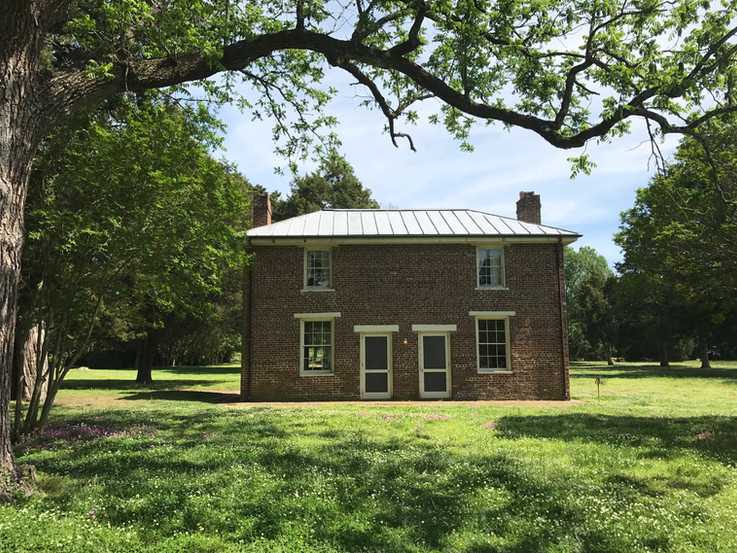Chippokes Plantation State Park
- Tim Murphy

- Apr 29, 2017
- 4 min read
Updated: Apr 24, 2021
Chippokes Plantation lies along the banks of the James River, directly across from the Jamestown. The 1,942-acre park is home to a Farm and Forestry Museum, campgrounds, bike and equestrian trails, and a well-preserved plantation house. Not to mention that parts of the farm are still operating, as they have for the past 400 years. Chippokes is the perfect spot for those who love history, recreation, or people who just want to kick back and relax for a while.

The entrance to the park is the site of all the recreational facilities: public pool, campground, playground, etc. The College Run trail, a 1.2-mile paved hiking path, is accessible from this area. This path follows the James River a ways and links up with the other trails at the mansion, none of which exceed 1.5 miles, so they are suitable for all fitness levels.
My first stop was at the Farm and Forestry Museum, a 600-piece collection attributed to Virginia agriculture and cultivation. Many of the artifacts show how farming technique and technology have evolved over the past 300 years. Additionally, there is a saw mill directly behind the museum, which is quite fascinating. Both of these exhibits entirely self-guided and highly recommended for those who are interested in the agricultural history of the region.
Across the road from the museum is the River House. This house was constructed around 1830 and is considered the oldest building in the park. The land surrounding it still serves as a working farm; mostly for livestock, but there are a few small plot gardens dedicated to Virginia's indigenous crops and plant life.
At the end of the road stands the Jones-Stewart Mansion. While the home was built in 1854, the property's history itself goes back another 200 years. Captain William Powell acquired 750 acres of this land back in 1619 and was originally part of the Jamestown settlement. One of Chief Powhatan's villages, under the leadership of Chief Chipoaks (hence the name Chippokes Plantation), lay in the midst of Powell's land claim. The colonists and Indians had a turbulent relationship over the years until it violently boiled over in 1622 when Indians massacred nearly 1/3 of the colonist population. Powell himself survived the attack, but was later killed in a retaliatory raid in 1623.

The property exchanged hands through many absentee owners after Powell's death, two of them being Governor William Berkeley and Philip Ludwell. By the 1640s, the property had nearly doubled in size to 1,403 acres. The amazing thing about that is the land has never been subdivided or lost. All of it has been retained for nearly 400 years and currently constitutes the park's historic and agricultural areas.
In 1837, Albert Carroll Jones bought the property and was the first owner to actually live on the grounds. He, his wife Ann, and their daughter Mary Ann lived in the River House through 1850. After Ann's death in 1850, Jones ordered construction for the mansion to be built. It was completed a few years later.
Jones was in the business of orchards. While other planters grew cash crops and foodstuffs, Jones grew peaches, apples, grapes, and corn, all which could be distilled. He was one of a select few in the area to be granted a distilling license. Business became so big, Jones had to build a wharf, blacksmith shop, and storehouses near the river to keep up with demand. By 1860, Jones's real estate value exceeded $20,000 and he owned 43 slaves to assist with the distillery operation. Chippokes was spared from any destruction during the Civil War. Interestingly enough, Jones was the major liquor supplier for both the Union and Confederate armies on the peninsula. Neither side wanted to interfere with production, so the Jones's house and family were left undisturbed.
After Jones's death in 1881, the estate was left to his second wife, Roberta Baskerville Jones, his daughter and granddaughter. Roberta was the last of the three to pass in 1910. In 1918, the property went up for action where it was bought by Victor and Evelyn Stewart. The property was deeded to the Commonwealth in 1969 and today remains one of the largest and oldest continually-worked farms in the nation.
When I toured the home, pictures weren't allowed inside, so I don't have any of those. But, the home is full of antique and contemporary turn-of-the-century furniture, pictures, etc. that originally belonged to the Stewart's and Jones's. When the Stewart's deeded the property, they left all of their personal affects too. The house that you see today is just like it was when Evelyn Stewart passed in 1969.
I had a wonderful time exploring the park. The museum and its exhibits were very cool, plus I got to pet some of the farm animals on the property and who doesn't like that? The tour of the house was amazing. It was so open and spacious and a pleasure to look around. And for you car enthusiasts out there, the gift shop next to the plantation house holds Victor Stewart's 1941 Packard 160-Series Clipper, the only one known in existence. With these attributes, I highly recommend coming to Chippokes. You could easily spend half a day here. Or, if you'd like, you can rent out cabins--re-purposed tenant and slave quarters--and spend the night!

















